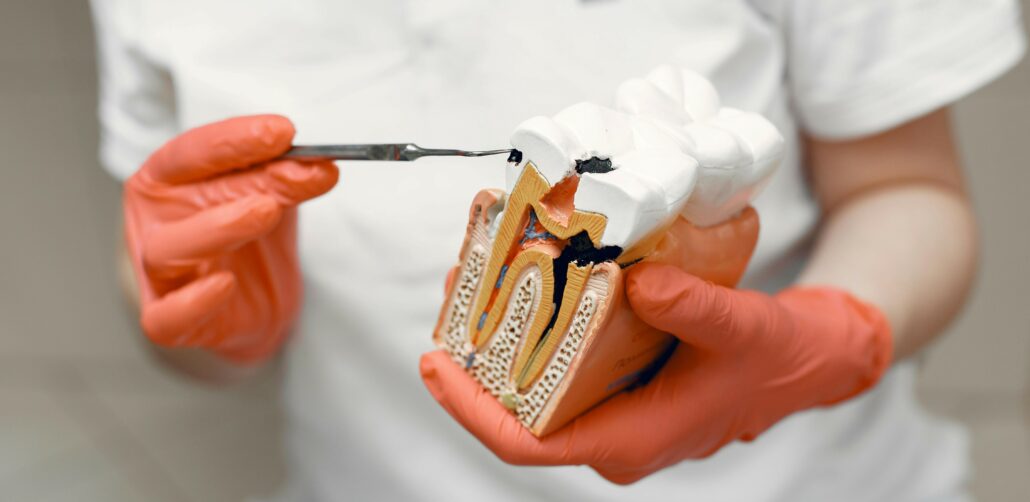A root canal procedure is a dental treatment used to repair and save a tooth that is badly decayed or infected. Modern root canal treatments are relatively painless and highly effective, allowing patients to keep their natural teeth and avoid more extensive dental work. Here’s a step-by-step description of the process:
- Diagnosis and Preparation: The dentist examines the tooth and takes X-rays to determine the extent of the infection. Once confirmed, the area around the tooth is numbed with local anesthesia to ensure comfort during the procedure.
- Accessing the Pulp: The dentist drills an opening in the tooth to access the infected or damaged pulp inside.
- Removing the Infected Pulp: Using specialized tools, the dentist removes the infected or dead pulp from the pulp chamber and root canals.
- Cleaning and Shaping the Canals: The empty canals are thoroughly cleaned and disinfected to remove any remaining bacteria. The dentist then shapes the canals to prepare them for filling.
- Filling the Canals: The cleaned and shaped canals are filled with a biocompatible material, usually gutta-percha, to seal them and prevent future infection.
- Sealing the Tooth: A temporary or permanent filling is placed to close the opening made in the tooth. If a temporary filling is used, a follow-up visit is scheduled to place a permanent crown or filling.
- Restoration: In most cases, a crown is placed over the tooth to restore its shape, strength, and function. This step is crucial for protecting the tooth and ensuring it lasts for many years.
The entire procedure is typically completed in one or two visits, depending on the complexity of the case.

